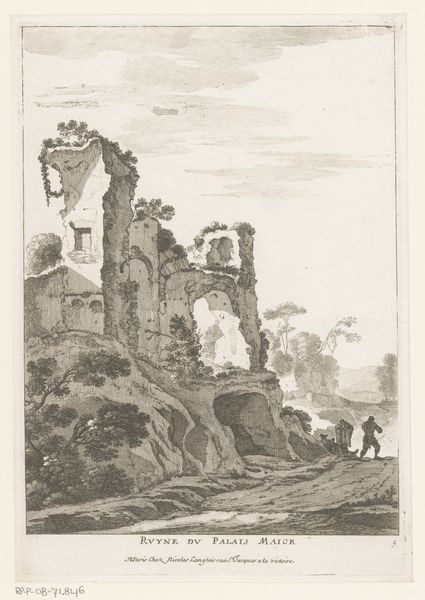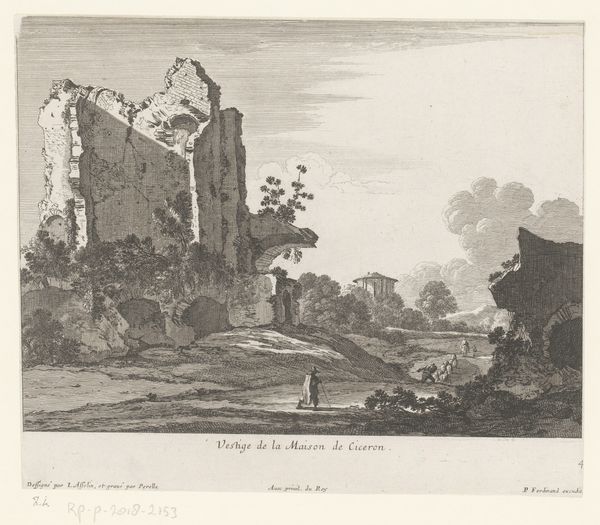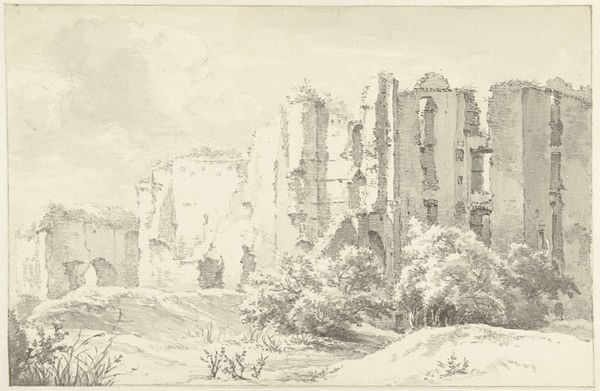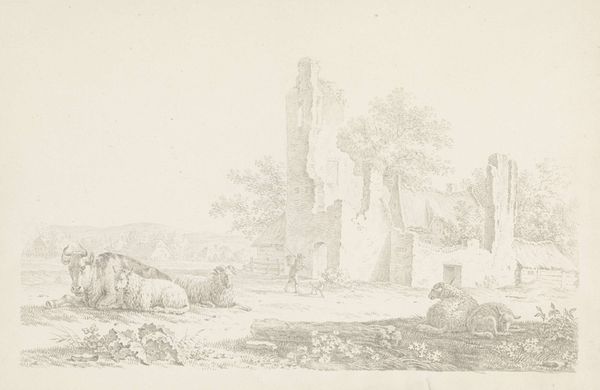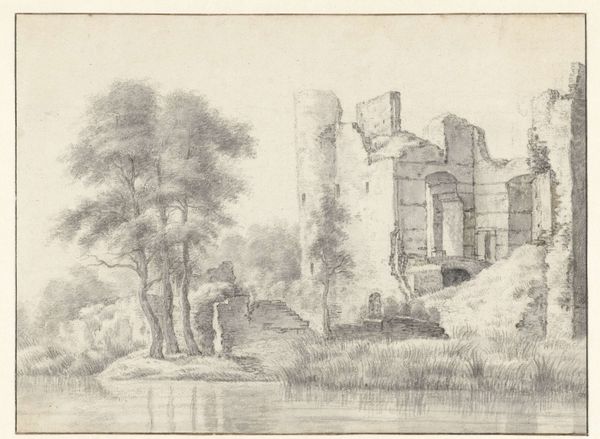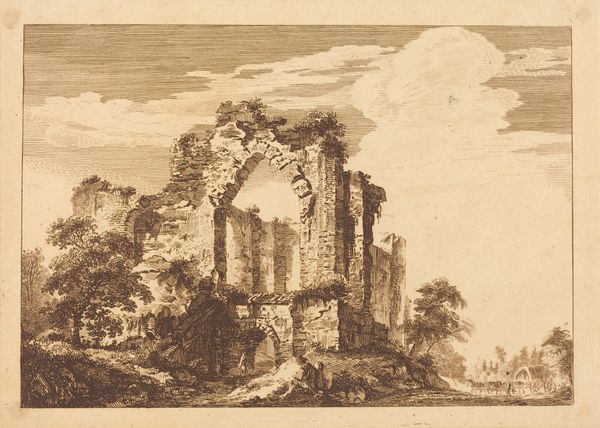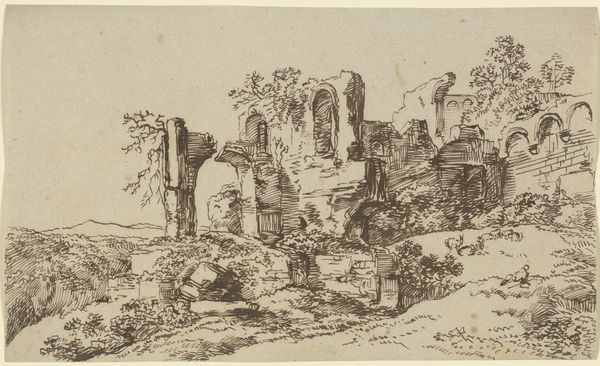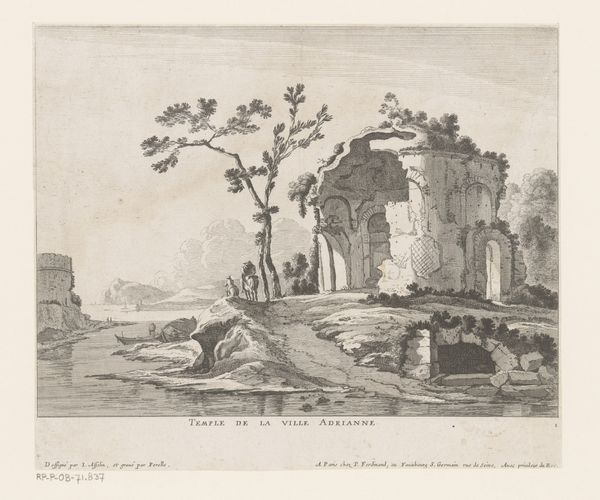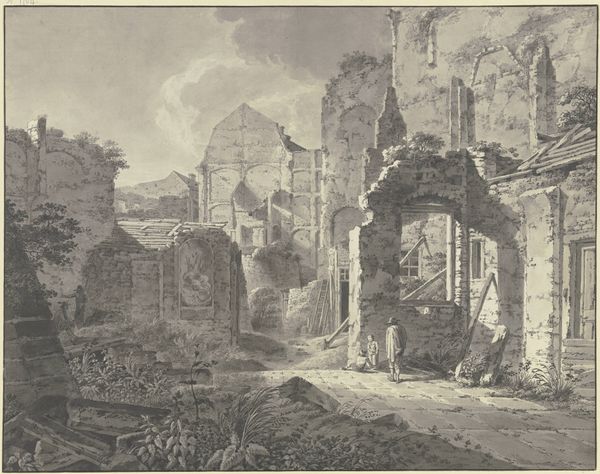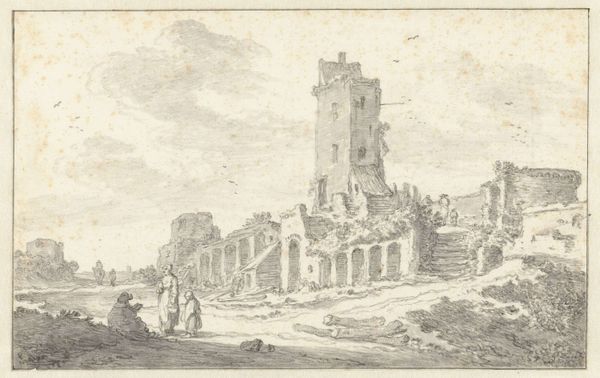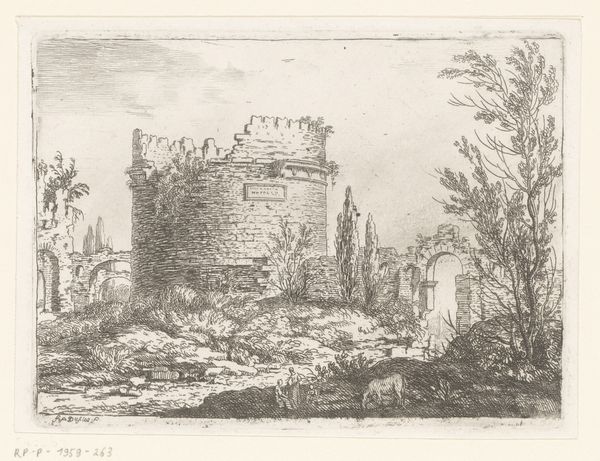
Dimensions: height 235 mm, width 323 mm
Copyright: Rijks Museum: Open Domain
Curator: Let’s turn our attention to this striking ink drawing by Martinus Antonius Kuytenbrouwer Jr., created in 1854. It’s entitled “Ruïne van Kasteel Brandenbourg” and currently resides here at the Rijksmuseum. Editor: Immediately, I’m drawn to the incredible detail. It feels… well, melancholy is the first word that springs to mind. You can almost hear the whispers of the past carried on the breeze through those broken walls. Curator: That’s a keen observation. Kuytenbrouwer, working in the Romantic tradition, was deeply interested in capturing picturesque ruins, and castles held particular fascination for artists of the era. This drawing highlights the way the medieval past was being re-imagined during the 19th century. Editor: It's the little things, isn't it? The way the ink captures the rough texture of the stone, the hint of reflections in the water… it gives the ruins a real weight, a tangible history. Curator: Indeed. Drawings like these played an important role in shaping public perceptions of history and heritage. They were often reproduced and circulated widely, contributing to the rise of historical tourism. People travelled to experience the Romantic ideals they saw represented through this kind of landscape work. Editor: There’s something powerful about ruins, isn’t there? They are like frozen poems of time passing and civilization ending. What does it say, do you think, about the impulse to not only visit them but make an artwork based on what’s been left behind? It suggests not a memorializing but something grander, bigger. Curator: Absolutely. The picturesque style often associated with Romanticism suggests this search for the sublime in something imperfect. Instead of a vision of an idealized classical structure, one instead looks at a ruin and sees the strength and longevity of humankind itself. Editor: So, it's like a portrait of time, in a way? Not just history, but the relentless march of it? Now I look at it in a new way! I will go on that trip for the perfect Romantic ruin shot. Curator: Precisely. It’s a lens through which to contemplate the fragility and resilience of human endeavors across time, all contained in a drawing made over a century and a half ago. Editor: Exactly! A ruin within a ruin! Thank you for that thoughtful illumination.
Comments
No comments
Be the first to comment and join the conversation on the ultimate creative platform.


